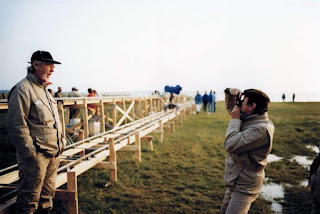Pastoral: To Die in the Country (1974), Shūji Terayama
The grandeur work of art very well makes it's position clear by making us realize the lack of an orthodox narrative doesn't affect the overall conceiving.
As stated, the film doesn't follow a traditional narrative and relies upon it's dreamlike successive imagery and visual sequences to create it's metaphorical density on the concept of youth and life.
The entire journey of our considerable central character's retrospection of the past follows him in the faceless ordeal, probably signifying the existential crisis the personality has endured through.
The incoherence and disjointed timeline is sure a tough job to work out and will definitely be perceivable with a more critical examination, but the contextual meaning will only be revealed upon the progression of the narrative.
Extraordinary imagery has no hidden agenda other than pointing out the futility of time and the past that has been lived through.
While it strongly suggests a surmountable pain and abuse that formed the current persona, the philosophical bereavement of the entirety sums up in the most desperately pessimistic implication.
-"It was shocking to come face to face with the ghost of my childhood"
For a better reference, the film is a collection of allegories of a person's life, jumbled with the series of perplexed events that actually shaped the eventuality. From this point of view, the film is an excellent context on the concept of causality, which has been artistically amplified through Terayama's vision and unquestionably a magnificent production design to begin in the first place.
The sheer artistry's brilliance is not only in the contemplative purpose of youth, but the magnitude of it's wildness comes into play with the psychoanalytic angle and motif that rolls out later in the film.
In a way, the director has set an inbound fence encapsulating the film's world which ensures the art's existence on a very different plane of reality, often isolating itself and as well as it's audience in a different world altogether, deep drenched in the passions, desires, will and devastating effects of deaths.
Every aforementioned elements that fuels the narrative derives it's metaphorical values with subtle yet strong symbolism in the act of vivid presentation of visual sequences that although feels to be bizarre and segmented but the same prospect gives it's advantage of establishing peak surrealism.
The avid success of Terayama in this achieved surrealism transported from the metaphorical realm, lies in it's grand puzzle of character examinations and rationalization often forcing us the disarrangement of dreams and reality from the complexity of it.







Too good of a review
ReplyDeleteThank you so much brother. But I don't think it is.
ReplyDeleteI loved it 🙏
Delete